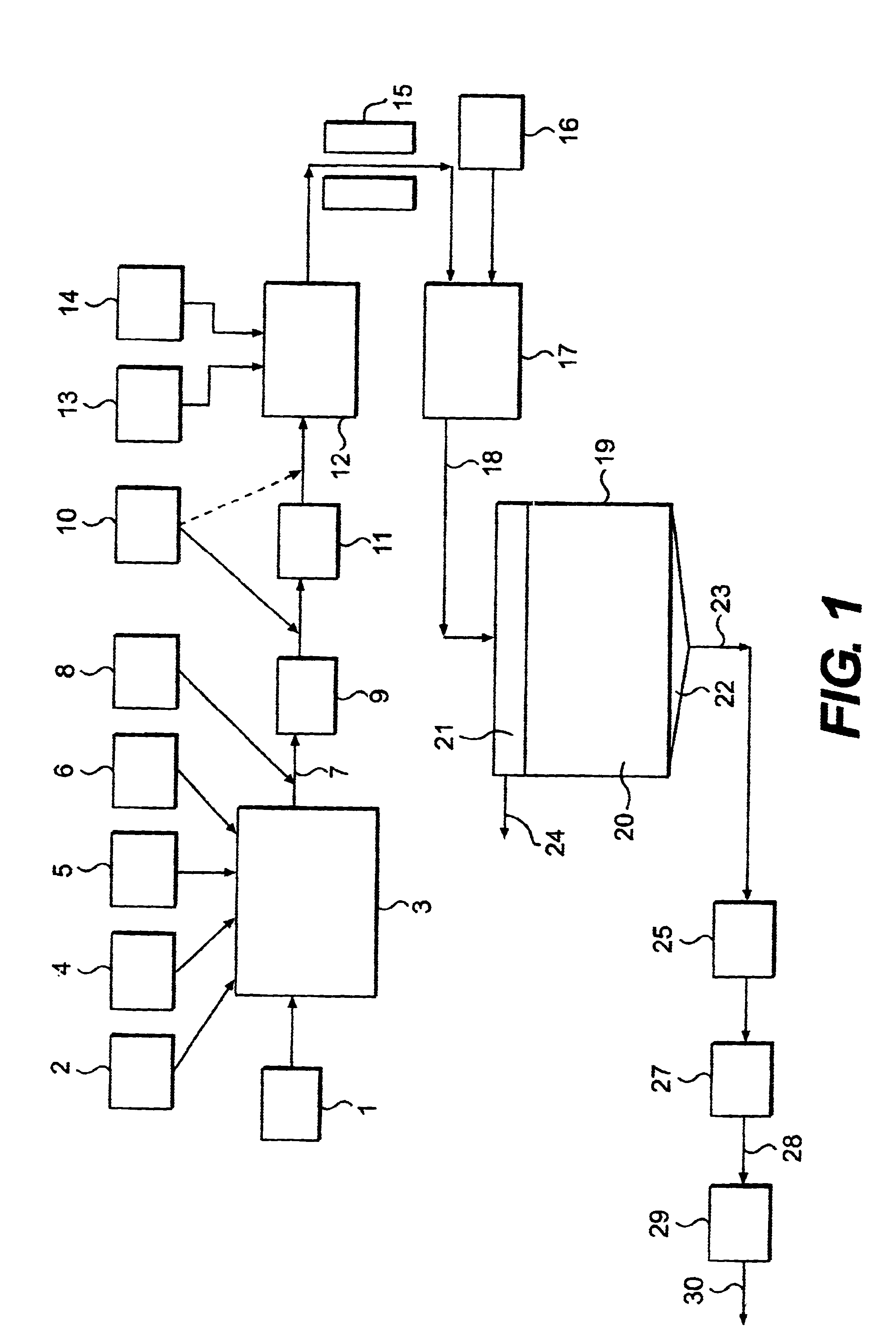Method of treating an aqueous suspension of kaolin
a technology of kaolin and aqueous suspension, which is applied in the direction of distillation separation, separation process, chemical apparatus and processes, etc., can solve the problems of adverse effects on the whiteness and brightness of kaolin, adverse effects on one or more desirable properties of kaolin, and significant effects on the properties of kaolin clay, etc., to achieve the effect of improving floc formation and effectiveness in steps
- Summary
- Abstract
- Description
- Claims
- Application Information
AI Technical Summary
Benefits of technology
Problems solved by technology
Method used
Image
Examples
example 1
The effect of pH during selective flocculation of the treated slurry was investigated as follows.
A slurry of a crude kaolin from Georgia, USA having a TiO.sub.2 impurity content of about 2% by weight was prepared and treated in the manner generally as described earlier with reference to FIG. 1 but in several runs at different pH values using, where appropriate, either ammonium hydroxide solution or sodium hydroxide solution (from source 14 in FIG. 1) as alkali added following conditioning by ageing and prior to selective flocculation polymer addition to adjust pH. Blunging in each case was carried out at 65% solids using 0.25% active sodium hexametaphosphate and 0.1% active fully neutralized sodium polyacrylate commercially available as the product C211. Ageing in each case was carried out after blunging for a period of about 18 hours. After ageing, the pH was adjusted as described earlier and then selective flocculation polymer was added. The selective flocculation polymer added in...
example 2
The effect of addition of polyacrylate as conditioning chemical to the kaolin slurry subject to selective flocculation was investigated as follows. A kaolin crude slurry having a TiO.sub.2 content of about 2% was prepared and treated in several runs in the manner described in Example 1, except that the following conditions were applied in this Example. The pH was either 10.5 or 11.5 during selective flocculation, no polyacrylate was added at the blunging stage and the input slurry in each case had a specific gravity of 1.066 prior to selective flocculation, the overflow specific gravity being maintained at 1.002. The selective flocculation polymer dose was approximately 0.035%. No sodium polyacrylate C21 1 was added to the treated slurry in two of the runs and C211 was added following blunging and dilution (e.g. as indicated in FIG. 1 from source 10) in an active amount of 0.1% by weight in another two of the runs. The settling time (defined earlier) during selective flocculation an...
example 3
The effect of conditioning by ageing was investigated as follows.
A kaolin slurry was treated as in Example 2 and generally with reference to FIG. 1, by using 0.1% by weight of C211 sodium polyacrylate added following the blunging stage and prior to ageing. Selective flocculation was carried out using a pH of 11.5. One sample A of the slurry was treated after a period of 10 minutes following C211 polyacrylate addition by pH adjustment and then addition of the selective flocculation polymer to produce selective flocculation. Another sample B of the slurry was aged with gentle stirring following addition of the C21 1 polyacrylate for a period of about 3 days prior to pH adjustment and then selective flocculation by addition of the selective flocculation polymer. The brightness and titania content of the resulting kaolin product were measured in each case as described in Example 1 and the results obtained are shown in Table 3 as follows.
As seen in Table 3, extended ageing, in this case ...
PUM
| Property | Measurement | Unit |
|---|---|---|
| Fraction | aaaaa | aaaaa |
| Time | aaaaa | aaaaa |
| Percent by mass | aaaaa | aaaaa |
Abstract
Description
Claims
Application Information
 Login to View More
Login to View More - R&D
- Intellectual Property
- Life Sciences
- Materials
- Tech Scout
- Unparalleled Data Quality
- Higher Quality Content
- 60% Fewer Hallucinations
Browse by: Latest US Patents, China's latest patents, Technical Efficacy Thesaurus, Application Domain, Technology Topic, Popular Technical Reports.
© 2025 PatSnap. All rights reserved.Legal|Privacy policy|Modern Slavery Act Transparency Statement|Sitemap|About US| Contact US: help@patsnap.com



